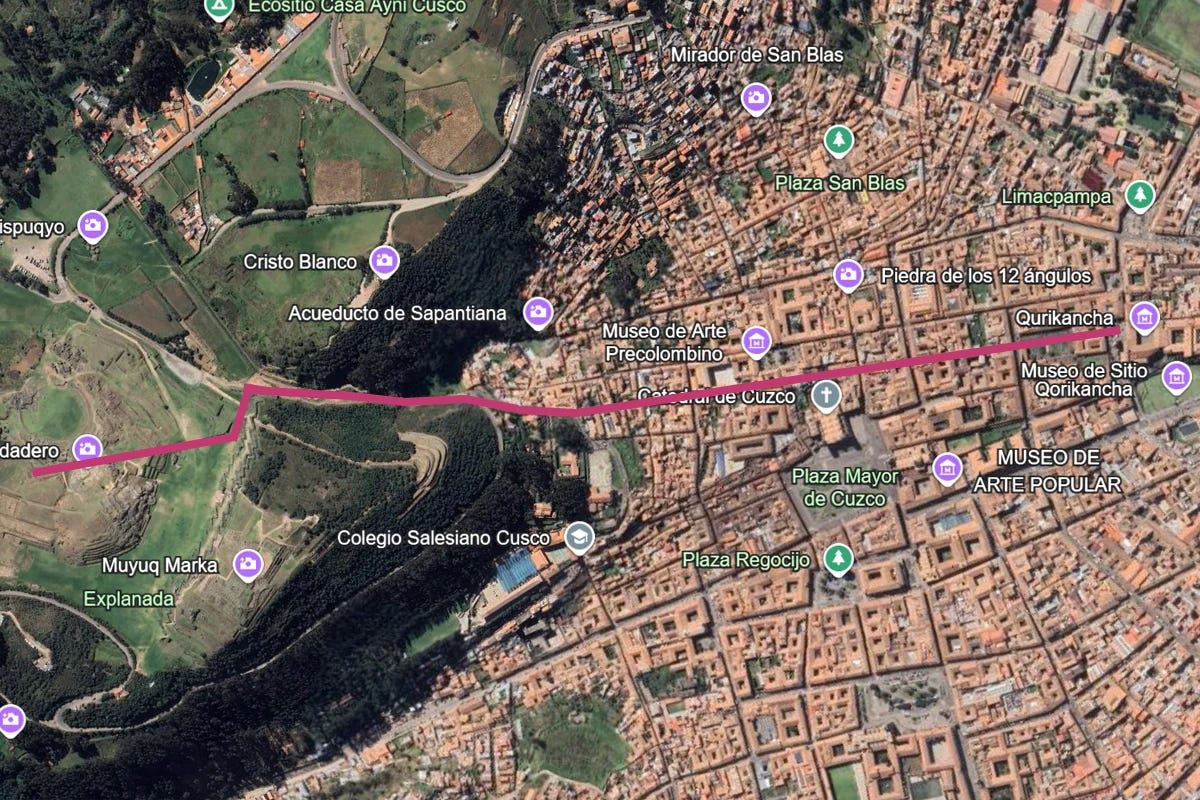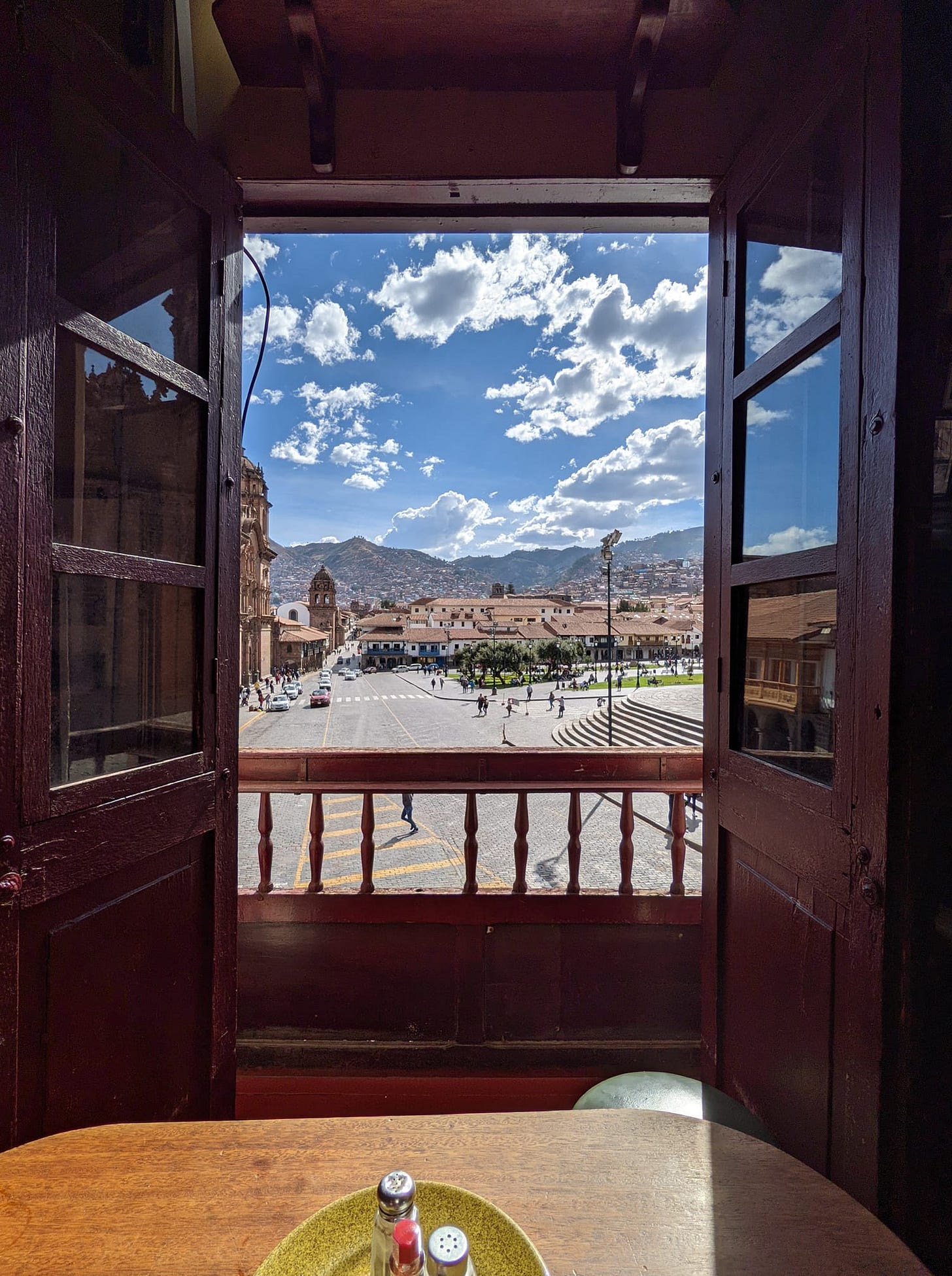Thursday Things is here! This week we explore an Inca tunnel and take a fantastic medieval journey.
If you enjoy this edition, please click the heart icon in the header or at the end of the post to let me know.
Cusco. I know this maze of streets like the back of my hand. Let me know if you need directions to Starbucks. Photo by Kieran Proctor on Unsplash
Inca Tunnels of Cusco
I’ve been to Cusco, Peru (although I learned to spell it Cuzco) and it’s one of my favorite cities I’ve visited. I love any city with winding streets and staircases and narrow passages and lots of stone buildings, so the old historic center of Cusco was right on point for me.
Learning more about the Inca (which, sorry, I’m just not going to spell with a K) was a bonus because most of what I knew had to do with the end of their empire at the hands of Pizarro and the boys, not their long and fascinating history and culture before 1532.
The Spanish built a lovely little city on top of the Inca city that was already there, but they weren’t real big on historic preservation, so many of the previous structures were torn down or repurposed. What you see in old Cusco now is a mix of historic layers.
Including, apparently, some previously unknown tunnels.
Groundbreaking study finds hidden Inca tunnel network over a mile in length
Archaeologists have announced the discovery of a Chinkana tunnel system (meaning “labyrinth”), stretching over 1,750 metres beneath the city of Cusco.
Cusco served as the administrative, political, and military capital of the Inca Empire, which evolved from the small city-state known as the Kingdom of Cusco.
Founded in the early 13th century AD, the kingdom steadily expanded through warfare and peaceful assimilation, eventually becoming the vast Inca Empire, which flourished from 1438 until the Spanish conquest led by Francisco Pizarro.
During a press conference titled “Chinkana: Unveiling of a Mystery” held at the Provincial Municipality of Cusco, archaeologists announced a Chinkana tunnel system beneath Cusco that spans over 1,750 metres from the Temple of the Sun (the most important temple in the Inca Empire) and extending toward Sacsahuaman, a citadel on the northern outskirts of the city.
Here is the map from the article, with the red line showing the path of the main tunnel network. The reason this story is in Thursday Things today is that I walked right over this tunnel without realizing it and I think that’s cool. Those are the kind of high quality editorial decisions we make here at Thursday Things!
I can see where my hotel was. Main route of Chinkana – Image Credit : Association of Archaeologists of Peru via Heritage Daily
Here are more details about the tunnels and their discovery and exploration, in Spanish:
Arqueólogos Jorge Calero y Mildred Fernández descruben pasajes subterráneos incas en Cusco
I’m sure this discovery will feature in a future episode of Ancient Aliens.
Cusco. View from the highest altitude Irish pub in the world. Image: Thursday Things
Getting Medieval
This exhibit might be worth a trip to New York (which has been going medieval in other ways).
Exploring the Medieval World Through Illuminated Manuscripts at the Morgan Library
The Morgan Library & Museum has unveiled an extraordinary exhibition, The Book of Marvels: Imagining the Medieval World, running from January 24 through May 25, 2025. This exhibit provides a glimpse into how medieval Europeans imagined distant lands and cultures through richly illustrated manuscripts.
At the heart of the exhibition lies the Book of the Marvels of the World, a 15th-century French manuscript brimming with both fantastical tales and vivid depictions of foreign lands. The Morgan’s copy of the text, regarded as the most complete surviving version, is joined by another rare copy from the J. Paul Getty Museum. Together, they invite viewers to explore how medieval Europeans perceived the broader world through a mix of reality and myth.
Maps? Check. Fantastical tales? Check. Illuminated manuscripts? Check.
Yeah, this checks all the boxes.
Among the manuscripts on display are some of the most evocative depictions of medieval imagination. From descriptions of massive snails in Sri Lanka—so large that people purportedly lived inside their shells—to accounts of Arabia’s precious gems harvested from dragons, the Book of Marvels showcases how medieval minds stretched the limits of belief.
But wait! There’s more!
The exhibition also includes:
Illustrated manuscripts by Marco Polo and John Mandeville.
An Ottoman Book of Wonders, created for a sultan’s daughter.
A medieval map of the Holy Land based on pilgrimage accounts.
One of Europe’s earliest depictions of Native Americans.
You can get all the details, and directions, at The Morgan Library & Museum website.
The Book of Marvels: Imagining the Medieval World
From the tales of famous travelers like Marco Polo and Alexander the Great to the ancient encyclopedias of Pliny and Isidore, medieval conceptions of the world were often based more on authoritative tradition than direct observation. This exhibition presents one of the most fascinating examples of a medieval guide to the globe, known as the Book of the Marvels of the World. Written in France by an unknown author, this fifteenth-century illustrated text vividly depicts the remarkable inhabitants, customs, and natural phenomena of various regions, both near and far. Reuniting two of the four surviving copies, The Book of Marvels: Imagining the Medieval World brings to life medieval conceptions—and misconceptions—of a global world.
Whether you travel in person or by reading travelogues, the world is indeed a marvelous place. Go see it!
This week’s edition is brought to you by Dan’s Advice: Take control of your digital life.
Thank you for reading!
Please click the hearts, leave a comment, and use the share feature to send this issue to a friend who might enjoy it. See you next Thursday!






